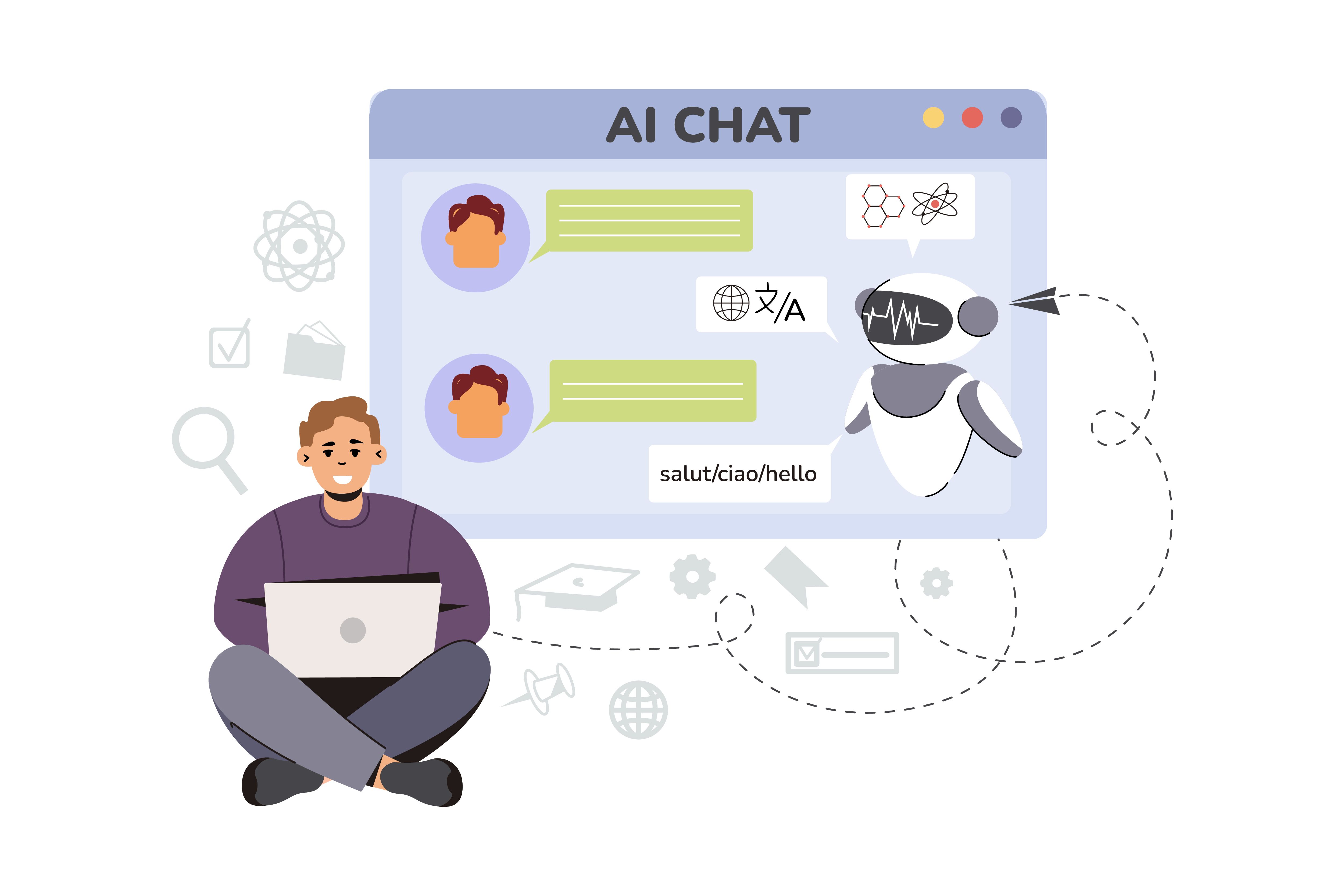From Static Pages to Smart Sites: Integrating AI into Web Design Anonymous

Key Points
- AI-powered web design can increase user engagement by up to 80% through personalized experiences and intelligent interactions.
- Static websites are losing ground to dynamic, AI-enhanced sites that adapt in real-time to user behavior and preferences.
- Machine learning algorithms can optimize website layouts, content, and navigation automatically based on user data.
- AI chatbots and virtual assistants can handle up to 80% of routine customer inquiries, improving response times and user satisfaction.
- Predictive analytics powered by AI help businesses anticipate user needs and deliver relevant content before users even search for it.
- AI-driven accessibility features ensure websites are usable by everyone, automatically adapting to different abilities and preferences.
Overview
The era of static web pages is rapidly coming to an end. As user expectations evolve and technology advances, businesses are discovering that traditional websites can no longer compete with intelligent, AI-powered platforms that adapt, learn, and respond to individual user needs.
Artificial intelligence is fundamentally transforming web design from a one-size-fits-all approach to dynamic, personalized digital experiences. This shift isn't just about aesthetics or functionality, it's about creating websites that think, learn, and evolve alongside their users.
Unfortunately, many businesses are still stuck with outdated static websites that fail to engage modern users, miss conversion opportunities, and provide generic experiences that don't differentiate them from competitors.
This blog post by Anablock explores how integrating AI into web design can revolutionize your online presence, enhance user engagement, and drive measurable business results through intelligent, adaptive digital experiences.
1. Personalized User Experiences Through Machine Learning
The most significant advantage of AI-powered web design is its ability to deliver truly personalized experiences. Unlike static pages that show identical content to every visitor, AI-enabled websites adapt in real-time based on user behavior, preferences, and context.
Machine learning algorithms analyze visitor data, browsing patterns, click behavior, time spent on pages, and past interactions, to customize content, layout, and recommendations for each individual user. This level of personalization can increase engagement by up to 80% and significantly improve conversion rates.
Key Personalization Features:
- Dynamic content that changes based on user demographics and behavior
- Intelligent product or service recommendations
- Personalized navigation paths that anticipate user needs
- Customized call-to-action buttons based on user intent
- Adaptive layouts that optimize for individual preferences
Implement AI-driven personalization engines that track user behavior and automatically adjust content delivery. Start with basic behavioral tracking and progressively enhance personalization as you gather more data. Tools like Anablock's AI solutions can help integrate these capabilities seamlessly into your existing website.
2. Intelligent Chatbots and Virtual Assistants
AI-powered chatbots have evolved far beyond simple scripted responses. Modern conversational AI can understand context, handle complex queries, and provide genuinely helpful assistance that rivals human customer service representatives.
Intelligent chatbots can handle up to 80% of routine customer inquiries instantly, providing 24/7 support without increasing staffing costs. They can qualify leads, schedule appointments, answer product questions, and guide users through complex processes, all while learning from each interaction to improve future responses.
Chatbot Capabilities Include:
- Natural language processing for understanding conversational queries
- Context awareness that remembers previous interactions
- Multi-language support for global audiences
- Integration with business systems for real-time information
- Sentiment analysis to detect and escalate frustrated users
- Automated lead qualification and routing
3. Automated Design Optimization and A/B Testing
AI transforms web design from a set-it-and-forget-it approach to a continuously evolving platform that automatically optimizes itself for maximum effectiveness.
Traditional A/B testing requires manual setup, time-consuming data collection, and human analysis. AI-powered optimization runs continuous multivariate testing, analyzing hundreds of design variations simultaneously and automatically implementing the best-performing combinations.
Machine learning algorithms can test button colors, headline variations, image placements, and navigation structures simultaneously, learning which combinations work best for different user segments. This continuous optimization ensures your website is always performing at its peak, without requiring constant manual intervention.
4. Enhanced Accessibility Through AI
AI is making the web more accessible than ever before, automatically adapting websites to accommodate users with different abilities and preferences.
AI-powered accessibility features ensure compliance with accessibility standards while providing genuinely inclusive experiences. These systems can automatically generate alt text for images, provide real-time captioning for video content, adjust contrast and font sizes, and even reorganize navigation for screen readers.
Accessible websites reach broader audiences and demonstrate social responsibility while also benefiting from SEO advantages, as search engines favor accessible content.
5. Predictive Content Delivery and Smart Search
AI enables websites to anticipate user needs and deliver relevant content before users even search for it. Predictive analytics analyze user behavior patterns, seasonal trends, and contextual signals to surface the most relevant information at the optimal moment.
Smart search functionality powered by natural language processing understands user intent rather than just matching keywords. Users can ask questions conversationally and receive accurate, relevant results that understand context and synonyms.
Content Intelligence Features:
- Predictive content recommendations based on browsing history
- Context-aware search that understands user intent
- Automatic content tagging and categorization
- Semantic search capabilities that go beyond keyword matching
- Personalized content hierarchies based on individual interests
This intelligent content delivery reduces friction, improves user satisfaction, and increases the likelihood of conversions by presenting the right information at precisely the right moment.
6. Voice and Visual Search Integration
As voice assistants and visual search become mainstream, AI enables websites to adapt to these new interaction paradigms seamlessly.
Voice search optimization requires understanding conversational queries and providing concise, accurate answers. AI processes natural language questions and delivers responses optimized for voice interfaces. Visual search capabilities allow users to search using images rather than text, with AI identifying objects, styles, and attributes to deliver relevant results.
The Role of Professional AI Integration
Implementing AI-powered web design requires specialized expertise and sophisticated technology. This is where professional services become invaluable. Anablock helps businesses transform their digital presence with custom AI-powered websites, intelligent chatbots, predictive analytics, and marketing automation tailored to your specific needs.
Professional AI integration provides:
- Custom AI implementation matched to your business goals
- Seamless integration with existing systems and workflows
- Ongoing optimization and machine learning management
- Data privacy and security compliance
- Training and support for your team
Measuring AI Integration Success
To ensure your AI-powered website delivers results, monitor these key metrics:
- User engagement rates and time on site
- Conversion rate improvements across different segments
- Chatbot resolution rates and customer satisfaction scores
- Page load times and technical performance metrics
- Personalization effectiveness through A/B testing results
- Accessibility compliance and user feedback
Use analytics platforms integrated with your AI systems to track performance and continuously refine your approach based on real-world data.
Conclusion
The transition from static pages to smart sites isn't optional, it's essential for remaining competitive in today's digital landscape. By integrating AI into web design through personalized experiences, intelligent chatbots, automated optimization, enhanced accessibility, predictive content delivery, voice and visual search, and real-time performance monitoring, your website can deliver exceptional user experiences that drive measurable business results.
The digital future belongs to businesses that embrace intelligent, adaptive web platforms. Tools and services like Anablock's AI-powered solutions can help you navigate this transformation, ensuring your website evolves from a static digital brochure into an intelligent platform that learns, adapts, and grows with your business.
Remember, AI integration is not a one-time project but an ongoing journey of continuous improvement and innovation. Start transforming your website today, and create digital experiences that engage users, drive conversions, and position your business at the forefront of the AI revolution.
Want to learn more about our healthcare solutions?
Discover how our AI technology can transform your healthcare practice.
Related Articles



